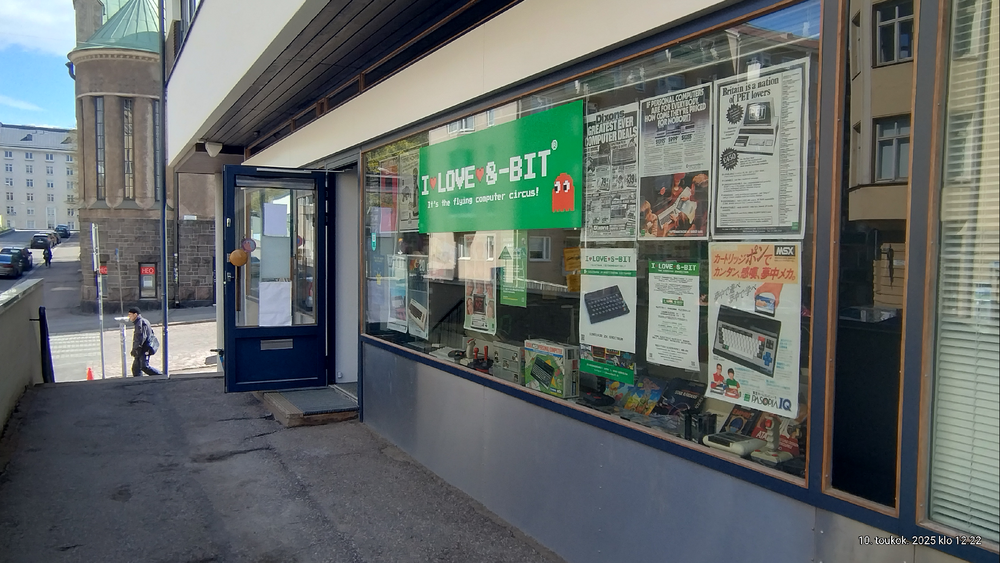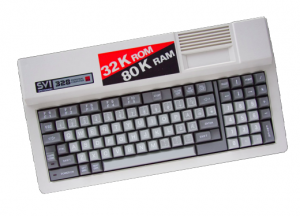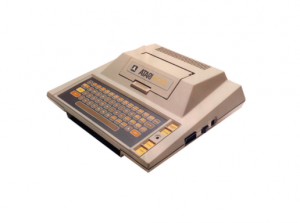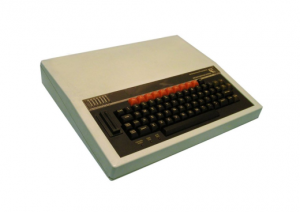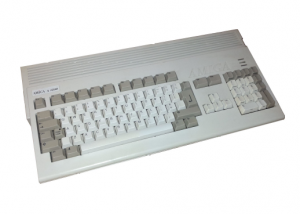Power without the price
The Atari 1040ST, launched in 1986, was a popular 16-bit home computer known for its affordability and advanced graphics and sound. Powered by a Motorola 68000 CPU at 8 MHz and featuring 1 MB of RAM, it was widely used for music production thanks to built-in MIDI ports. Competing with the Commodore Amiga, the 1040ST earned praise for its fast graphical interface and productivity software, becoming a favourite among musicians and hobbyists throughout the late 1980s.
In 1986, Atari started promoting the Atari 1040ST, a home computer that would come to define a generation of 16-bit computing in Europe. Positioned as a powerful yet affordable alternative to the Commodore Amiga and IBM-compatible PCs, the 1040ST offered a combination of processing power, graphics capabilities, and multimedia potential that made it stand out in a crowded market. Its introduction marked a significant step forward from Atari’s earlier 8-bit computers, demonstrating how personal computing could be both accessible and technically sophisticated. At the heart of the 1040ST was the Motorola 68000 CPU, running at 8 MHz, paired with 1 MB of RAM—an impressive configuration for a home computer at the time. The system supported high-resolution monochrome and color graphics, with resolutions up to 640×400 in monochrome and 320×200 in color, making it suitable for both gaming and professional applications. Unlike many of its contemporaries, the 1040ST featured a built-in MIDI interface, which quickly made it a favorite among musicians and studios, demonstrating Atari’s foresight in recognizing the convergence of computing and creative work. The combination of power, expandability, and affordability positioned the 1040ST as a versatile machine for hobbyists, educators, and professionals alike.
One of the most compelling aspects of the Atari 1040ST was its balance between technical sophistication and user accessibility. The machine ran TOS (The Operating System) with the GEM graphical interface, providing a relatively intuitive environment for users transitioning from 8-bit computers or early DOS machines. For gamers, the 1040ST supported a growing library of titles that leveraged its graphics and sound capabilities. From arcade-style action games to complex strategy titles, developers were able to push the hardware to create engaging experiences that rivaled more expensive systems. Finnish users, along with other European enthusiasts, appreciated the machine’s ability to handle both work and play, making it a true all-in-one solution for home computing. The 1040ST’s influence extended far beyond gaming. Its MIDI capabilities and relatively low cost made it a standard in small music studios, educational institutions, and multimedia labs. Musicians could connect keyboards, synthesizers, and sequencers directly to the computer, using software for composition and performance—a remarkable capability in the mid-1980s. In Finland and across Europe, this feature introduced many users to digital music production, fostering creativity and technical skills simultaneously. The combination of powerful hardware, expandability, and built-in interfaces helped establish the 1040ST as a bridge between consumer computing and professional creative work. Despite its many strengths, the Atari 1040ST faced challenges. While it was more affordable than the Commodore Amiga, it lacked some of the advanced graphics and sound capabilities of its competitor, particularly in multimedia-rich applications and games. However, its performance, especially in productivity and music applications, often outweighed these limitations. Its influence on the European computer market cannot be overstated; it helped establish a standard for what a mid-range home computer could accomplish and inspired a generation of users to explore both programming and creative software.
In retrospect, the Atari 1040ST represents a critical juncture in the evolution of personal computing. It combined 16-bit processing power, professional-grade multimedia support, and user accessibility in a package that was both affordable and versatile. Finnish computer enthusiasts, musicians, and hobbyists embraced it as a machine that could handle a wide range of tasks, from gaming and programming to music composition and graphics work. The 1040ST’s legacy is reflected not only in its hardware achievements but also in its influence on a generation of creative and technical users who were introduced to computing through its accessible yet sophisticated platform. Ultimately, the Atari 1040ST stands as a testament to a period in computing history when innovation, versatility, and user engagement converged. It was a machine that could entertain, educate, and inspire, bridging the gap between hobbyist experimentation and professional creativity. Its enduring appeal lies in its ability to combine power with accessibility, demonstrating that a home computer could be both a tool for work and a source of imagination—a legacy that continues to resonate with enthusiasts and retro computing fans around the world.


